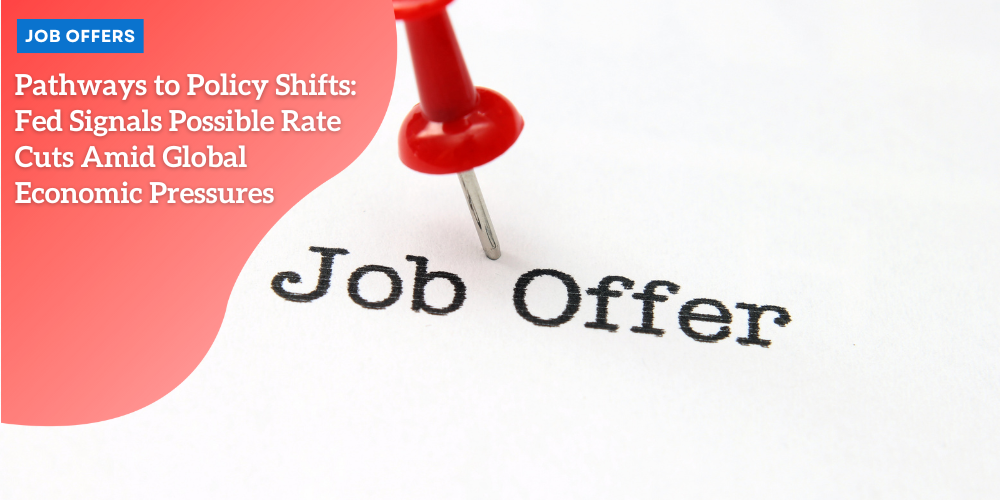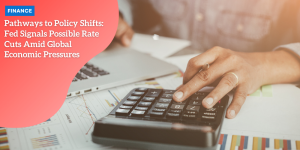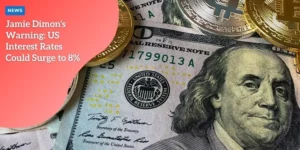Pathways to Policy Shifts: Fed Signals Possible Rate Cuts Amid Global Economic Pressures

Fed’s Waller Suggests Favorable Conditions for 2025 Rate Cuts
Federal Reserve Governor Christopher Waller has suggested that U.S. interest rates could be cut later in 2025, provided that inflation continues to moderate and trade tensions subside.
Anúncios
Speaking at a monetary policy conference in Seoul, Waller acknowledged that the recent tariff-driven rise in inflation may prove temporary, given the current absence of excessive labor-market pressure and large-scale government stimulus.
In his remarks, Waller emphasized that the Fed is not considering rate reductions due to economic weakness, but rather due to a more favorable inflationary environment.
“I would be supporting ‘good news‘ rate cuts later this year,” he stated, highlighting the possibility that moderate tariffs and controlled inflation could allow for monetary easing.
Anúncios
Key Inflation Gauge Shows Slight Uptick
This limited increase brought the annual inflation rate down, reinforcing the possibility that the inflation surge observed in previous years is gradually being tamed.
This cooling trend in price pressures has been interpreted by market analysts as a sign that the Federal Reserve could pivot toward easing monetary policy in the latter half of 2025, contingent on continued progress.
Jobs Report and ISM Data to Drive Market Sentiment
Investor focus this week is firmly set on the release of the May U.S. jobs report, as analysts assess the impact of tariffs on employment trends.
Anúncios
This data, combined with upcoming reports on manufacturing and services sector performance from the Institute for Supply Management (ISM), will offer deeper insight into the underlying strength of the economy.
Should job creation remain stable or improve, and wage growth stay moderate, the Fed would have further justification for considering rate cuts without stoking inflation fears.
European Central Bank Poised for Another Rate Cut
In the eurozone, the European Central Bank (ECB) is expected to announce another interest rate cut this Thursday.
While investors generally believe that the ECB’s rate adjustments are nearing completion, policymakers are expected to maintain flexibility in response to evolving economic conditions, especially if recessionary risks escalate.
This dovish shift in Europe reflects a broader global trend toward more accommodative monetary policies, with several central banks recalibrating their strategies amid changing geopolitical dynamics and weakening demand.

Trump Administration Doubles Down on Tariffs
In a move likely to influence both inflation and global trade flows, former President Donald Trump has pledged to double tariffs on imported steel and aluminum.
He argues that the measure will strengthen U.S. manufacturing and safeguard domestic employment.
However, the announcement has sparked renewed concerns among economists, who caution that such protectionist policies could fuel short-term inflation and disrupt international supply chains, particularly if retaliatory measures are imposed.
U.S.-China Trade Tensions Resurface
Trade negotiations between the U.S. and China have once again hit a roadblock.
Escalating rhetoric and new restrictions on rare-earth exports by Beijing have raised fears that the fragile truce between the two nations may collapse.
This geopolitical uncertainty adds another layer of complexity to the Fed’s monetary policy calculus.
American consumers, meanwhile, have expressed pessimism about the economy.
Recent surveys indicate that inflation expectations remain elevated, driven by the lack of clarity surrounding future trade policy.
Trade Deficit Narrows as Imports Decline
According to new data from the Commerce Department, the U.S. goods trade deficit fell sharply in April. Imports decreased by 20% to $276.1 billion, while exports grew 3.4% to $188.5 billion.
Analysts attribute this shift to the impact of newly implemented tariffs, which have discouraged foreign purchases.
While the shrinking deficit may appear favorable at first glance, it also signals potential slowdowns in domestic consumption and investment.
Jamie Dimon Issues Debt Warning
JPMorgan Chase CEO Jamie Dimon has warned of a potential crack in the bond market if the United States fails to confront its ballooning national debt.
Dimon emphasized that rising debt levels could spark a crisis of confidence among investors, leading to greater volatility in fixed-income markets.
His remarks underscore growing concerns on Wall Street regarding fiscal sustainability and the long-term implications of expansive government spending.
ECB and Bank of Canada Policy Updates Expected
While the ECB moves ahead with expected rate cuts, the Bank of Canada is widely anticipated to maintain its current interest rate stance.
This decision reflects a cautious approach, balancing the need to support economic growth while avoiding additional inflationary pressure.
Investors will scrutinize the language accompanying these announcements for clues on future moves, particularly as global demand fluctuates and supply constraints persist.
Stanley Fischer: A Legacy in Monetary Policy
The economic world mourns the passing of Stanley Fischer, former vice chairman of the Federal Reserve, who died at the age of 81.
Fischer, whose work spanned decades, played a pivotal role in shaping central banking frameworks both in the U.S. and internationally.
Colleagues and scholars alike praised his intellectual rigor and pragmatic approach to monetary challenges, noting that his influence will be felt for generations.
Outlook for G-10 Bonds Turns Dovish
According to analysts at Morgan Stanley, the yield outlook for G-10 government bonds has turned increasingly dovish through 2026.
The firm forecasts that the 10-year U.S.
Treasury yield will fall to 4.00% by year-end 2025 and drop further to slightly above 3.00% in 2026.
This shift is expected to result in outperformance by U.S. Treasuries compared to other major government bonds, such as German Bunds and Japanese government bonds, driven by anticipated Fed rate cuts.
Pension Funds and Bond Market Stability
In recent commentary, analysts have noted that despite the improved financial health of pension funds, their influence on long-term bond demand is likely to wane.
While corporate pensions still control over $3 trillion in assets, shifts in investment strategy may reduce their role as anchors in the bond market.
This evolution could impact both the availability and pricing of long-duration securities, with ripple effects across the broader financial landscape.
| Time (ET) | Economic Indicator | Details |
|---|---|---|
| 9:45 a.m. | U.S. Manufacturing PMI | Purchasing Managers’ Index for U.S. manufacturing sector |
| 10:00 a.m. | ISM Manufacturing Report, Construction Spending | Manufacturing conditions and spending on construction projects |
| 10:00 a.m. | Job Openings and Labor Turnover Survey | Details on job openings and labor turnover in the U.S. |
| 11:00 a.m. | Global Manufacturing PMI | Global manufacturing sector performance indicator |
| 1:00 p.m. | Fed Governor Lisa Cook addresses international economic issues | Speech by Fed Governor Lisa Cook on global economic challenges |
| 3:30 p.m. | Dallas Fed President Lorie Logan holds community roundtable | Dallas Fed President discussing economic issues with the community |
| 4:00 p.m. | U.S. Domestic Auto Industry Sales Report | Report on auto industry sales trends in the U.S. |
Conclusion: Fed Cautiously Optimistic as Global Pressures Persist
As the global economic environment continues to evolve, U.S. policymakers appear to be preparing for strategic adjustments rather than reactive ones.
The Federal Reserve, under the guidance of officials like Waller, is leaning toward gradual easing, contingent on domestic indicators and international developments.
With inflation showing signs of moderation, tariffs reshaping trade flows, and central banks worldwide recalibrating their stances, the remainder of 2025 promises to be a pivotal period for global monetary policy.





